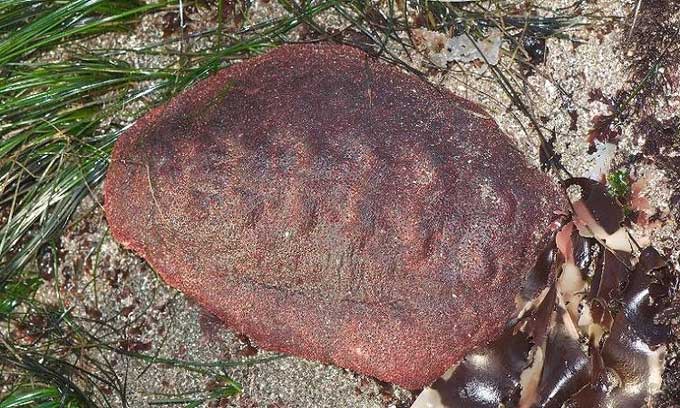A research team from Northwestern University, USA, has discovered a mollusk species nicknamed “wandering meat block” that contains a rare iron mineral.

The chiton resembles a piece of meat. (Photo: Northwestern University).
Chiton is a large mollusk scientifically known as Cryptochiton stelleri. Its nickname comes from its reddish-brown body, which looks like a piece of meat fallen from a pan. They inhabit rocky coastal areas. The largest chiton specimen in the world can reach a length of 33 cm. Researchers were surprised to find santabarbaraite in the chiton’s teeth, as this mineral was previously only known to exist in rocks.
“Santabarbaraite has only been observed in geological samples in extremely small quantities and has never been seen in biological tissue,” said Derk Joester, an associate professor of materials science and engineering at Northwestern University. “We think it may help make the teeth harder rather than just adding weight.”
Chitons require hard teeth because they scrape rocks to remove algae and other food sources. Their teeth are among the hardest materials found in nature and are attached to a flexible structure resembling a tongue called the radula. Utilizing various analytical methods at the Argonne National Laboratory and the Atomic, Nano, and Experimental Center at Northwestern University, the research team found the mineral in the part connecting the teeth to the chiton’s radula structure.
This new research helps scientists understand how chiton teeth resist wear, while also developing 3D printing ink that can create super-hard materials with high durability. The research findings were published on May 31 in the journal PNAS. Inspired by this discovery, Derk and his colleagues aim to produce ink containing iron and phosphate mixed with a natural compound produced by chitons. When the ink dries, it will form a hard material.





















































